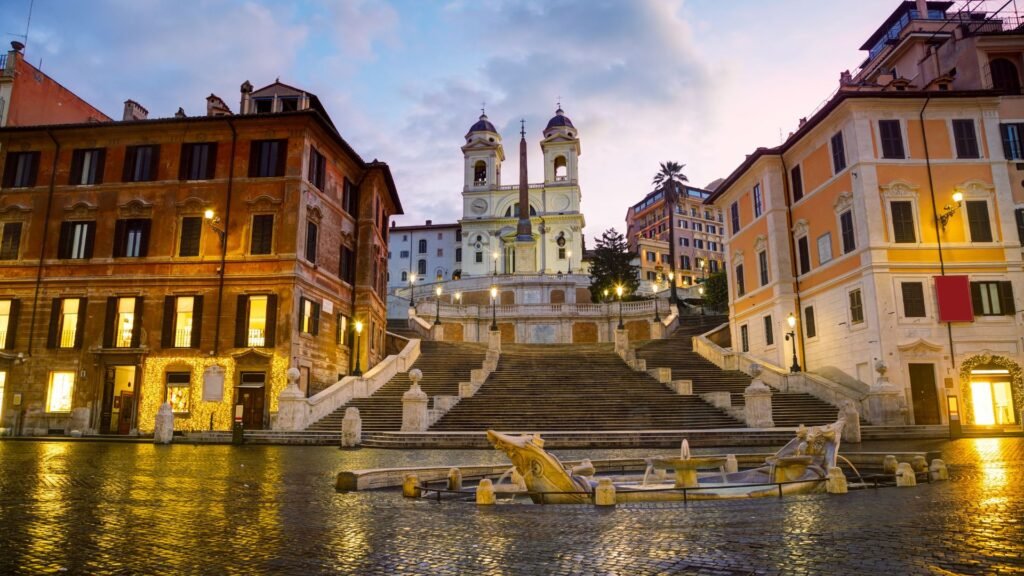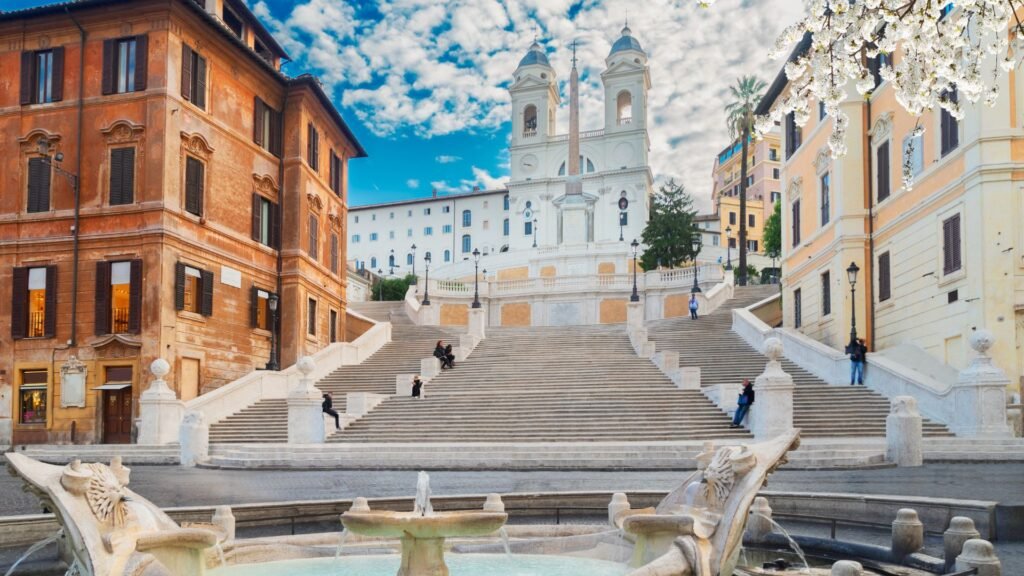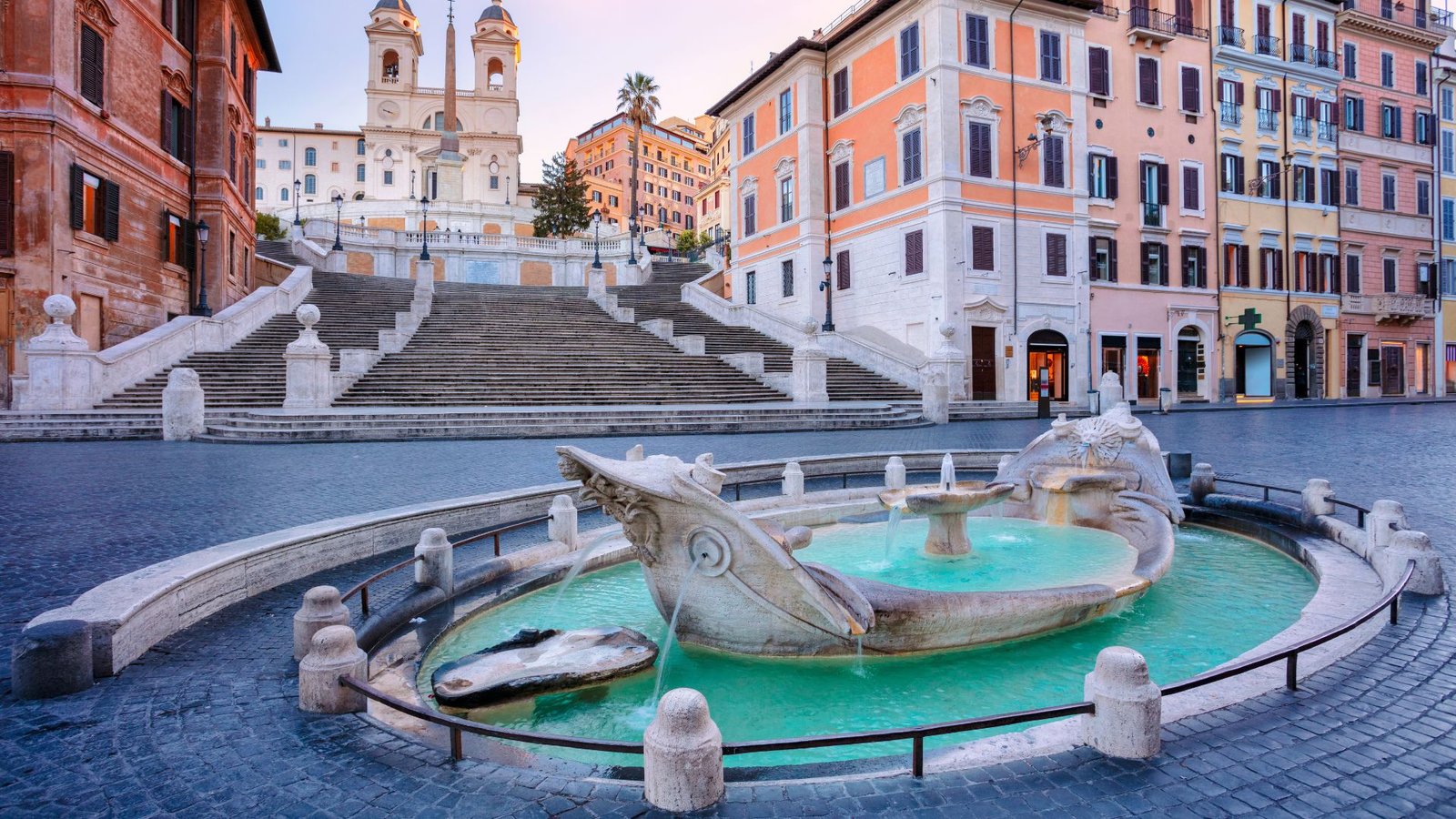The Spanish Steps are one of Rome’s most iconic landmarks, and I had the chance to visit them with my friends a few years ago as part of my Rome itinerary.
We loved spending time there, soaking up the lively atmosphere of Piazza di Spagna and enjoying the views from the top. With their elegant design and rich history, the Spanish Steps remain a must-see spot for anyone exploring the Eternal City.
Spanish Steps Detailed Guide
Spanish Steps Fun Facts
Here are some fascinating facts to know before your visit:
- It was built between 1723 and 1725, and designed by Francesco de Sanctis.
- The staircase has 135 steps in total.
- It was named “Spanish Steps” because of the nearby Spanish Embassy.
- It connects Piazza di Spagna at the base to the Trinità dei Monti Church at the top.
- Once, it was a gathering spot for artists, poets, and locals.
- Sitting, eating, or drinking on the steps is now prohibited to protect the monument.
- It was featured in films like Roman Holiday, boosting its worldwide fame.

Spanish Steps History
The Spanish Steps, or Scalinata di Trinità dei Monti, were built between 1723 and 1725 by architect Francesco de Sanctis. Commissioned to connect Piazza di Spagna with the Trinità dei Monti Church, the project was funded by French diplomat Étienne Gueffier. Despite this, the nearby Spanish Embassy gave the staircase its enduring name.

With 135 steps arranged in a sweeping, elegant design, the landmark quickly became a popular gathering place for locals, artists, and visitors. Today, the Spanish Steps remain one of Rome’s most iconic attractions, blending history, architecture, and culture in the heart of the city.
Spanish Steps Guided Tours
Visiting the Spanish Steps is free, but you can enhance your experience with guided tours. Platforms like Viator and GetYourGuide offer a variety of options, including:
- Rome: City Sightseeing Hop-on Hop-off Bus with Audioguide
- Rome: Big Bus Hop-on, Hop-off Open-Top Sightseeing Tour
- Rome: City Highlights Open-Top Bus Night Tour
Spanish Steps Location & Directions
The Spanish Steps (Scalinata di Trinità dei Monti) are located in the heart of Rome at Piazza di Spagna, a bustling square famous for its shopping, cafes, and historic charm. The staircase links the square below to the Trinità dei Monti Church at the top.
How to reach the Spanish Steps:
- On foot: If you’re nearby, the steps are easily walkable from landmarks like the Trevi Fountain (about 10 minutes) or Piazza del Popolo (around 15 minutes).
- By metro: Take Line A and get off at Spagna Station, which opens directly onto Piazza di Spagna.
- By bus: Several city buses stop near Piazza di Spagna, making it convenient from other parts of Rome.
Spanish Steps Hotels
Spanish Steps Restaurants
Frequently Asked Questions (FAQs)
Can you walk from the Spanish Steps to the Trevi Fountain?
Yes, it’s an easy walk of about 10 minutes through charming Roman streets, making it one of the most popular strolls in the city.
What are three facts about the Spanish Steps?
They were built in the 18th century to link Piazza di Spagna with Trinità dei Monti Church, feature 135 steps, and are one of Rome’s top meeting spots.
Can you go to the Spanish Steps at night?
Yes, the steps are open 24/7, and visiting at night offers a quieter and beautifully lit atmosphere.
Is it free to visit the Spanish Steps?
Absolutely, the Spanish Steps are free to visit, though sitting on them is not allowed.
Final Word – Is the Spanish Steps Overrated?
The Spanish Steps can feel overrated. They’re undeniably iconic and a great photo spot, but in terms of experience, they’re often crowded, tourist-heavy, and don’t offer much beyond a nice view of the surrounding streets. Suppose you’re looking for a lively area with cafés, shopping, or historic sites. In that case, the nearby Piazza di Spagna is enjoyable—but the steps themselves aren’t exactly a must-see compared to Rome’s other attractions like the Pantheon, Piazza Navona, or the Vatican.
That said, if it’s your first time in Rome, it’s worth a quick visit for the atmosphere and the Instagram shots, but don’t plan to linger for hours expecting something extraordinary.
I hope you found this guide helpful for your trip. If you plan to visit here, feel free to share your experience in the comments below.



